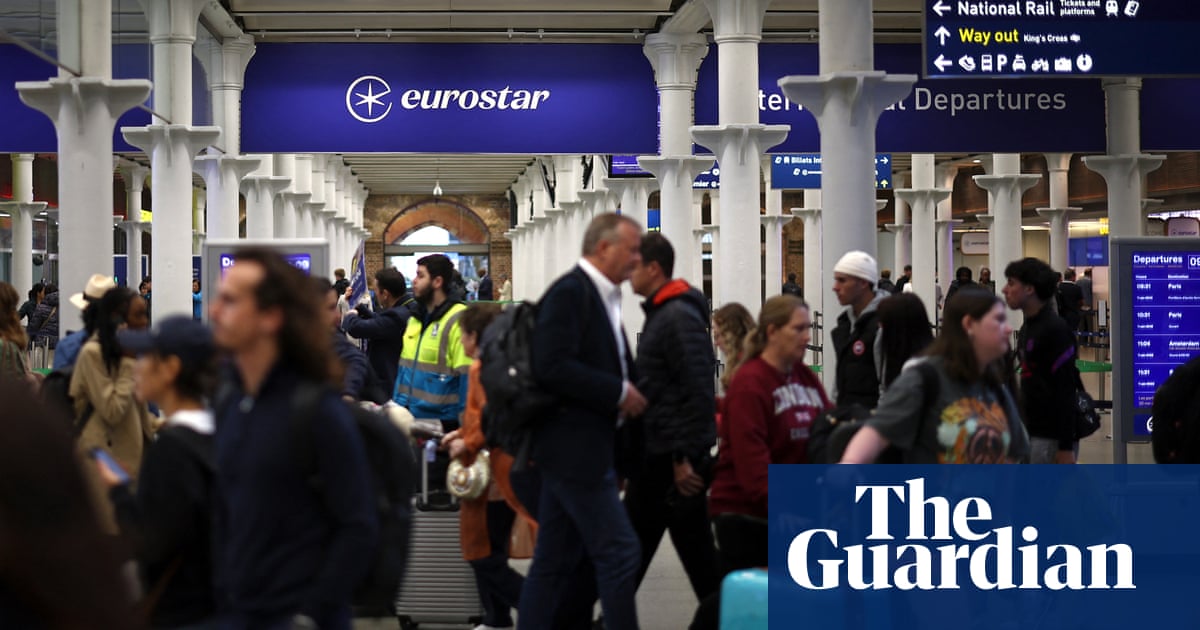St Pancras railway station in London and the Channel tunnel operator have agreed to work together to open up more trains from Britain to France, and routes to Germany and Switzerland.
The agreement is the latest sign of growing momentum for new passenger rail links from England across the Channel, after the UK’s only international station announced plans to triple the number of people who can travel through every hour.
St Pancras station is looking at ways to nearly triple the number of passengers passing through at peak times from 1,800 to 5,000, in an effort to open up more services to France and routes to Germany and Switzerland.
London St Pancras Highspeed (LSPH) – the company formerly known as HS1 that runs St Pancras – and Getlink, the Paris-based Channel tunnel operator, said they would work together to shorten journey times, improve timetable coordination, align on growth strategies and introduce more trains each hour for international services in each direction.
In January the rail regulator for Great Britain, the Office of Rail and Road, forced HS1 to cut the prices it charges rail companies for using its track between St Pancras and the tunnel to try to encourage new entrants.
Getlink said new direct high-speed train routes could serve Germany, Switzerland and France. Those could include Cologne, Frankfurt, Geneva and Zurich. Getlink has previously said it wanted new services to be up and running by 2029.
Eurostar is the only company that has carried foot passengers across the Channel during the 30 years of the tunnel’s operations, although Getlink’s Le Shuttle also takes cars with drivers and passengers. However, Eurostar has faced criticism over high prices, and it has ditched international services from Ashford and Ebbsfleet in Kent.
The Eurostar network runs from London to Paris, Brussels, and Amsterdam, as well as to Bourg-Saint-Maurice in the French Alps during the ski season. It is a far cry from the initial promises of a network stretching as far as Manchester and Edinburgh.
Train companies believe there could be increased interest in European destinations from travellers keen to avoid the large carbon emissions produced by air travel.
Several companies have emerged as possible competitors to Eurostar, including the billionaire Richard Branson’s Virgin Group, the Spanish rail company Evolyn and the Dutch startup Heuro.
However, St Pancras would require significant changes to cope with more passengers, as it already struggles during peak times with security and border checks for thousands of people who are then crowded into waiting areas.
after newsletter promotion
LSPH last year commissioned a consultancy, Active Thinking, to study how to increase passenger numbers. Its report found “a modest amount of new infrastructure would ‘unlock’ most of the constraints currently hampering growth” at St Pancras.
Robert Sinclair, the chief executive of LSPH, which changed its name from HS1 last week, said he wanted “a future where high-speed rail is the preferred option for travelling to Europe”.
His company and Getlink would “actively work together to encourage new and existing train operators to expand capacity and launch new destinations unlocking the potential of a fully connected Europe”, he said.







